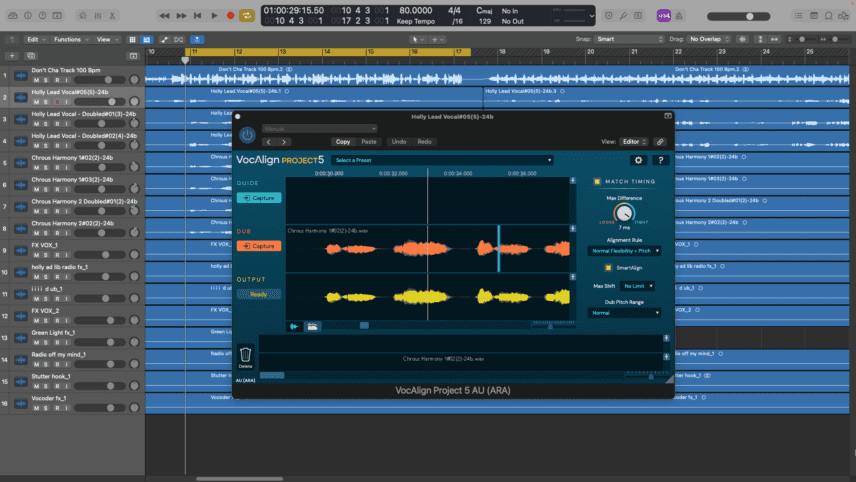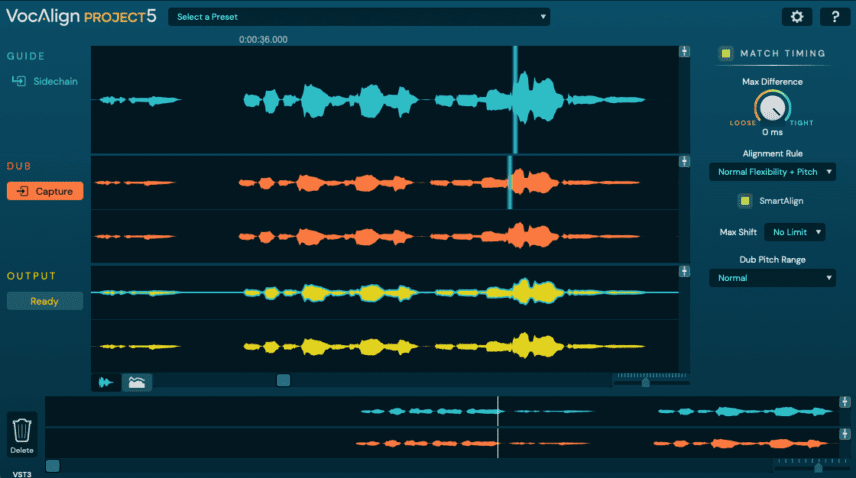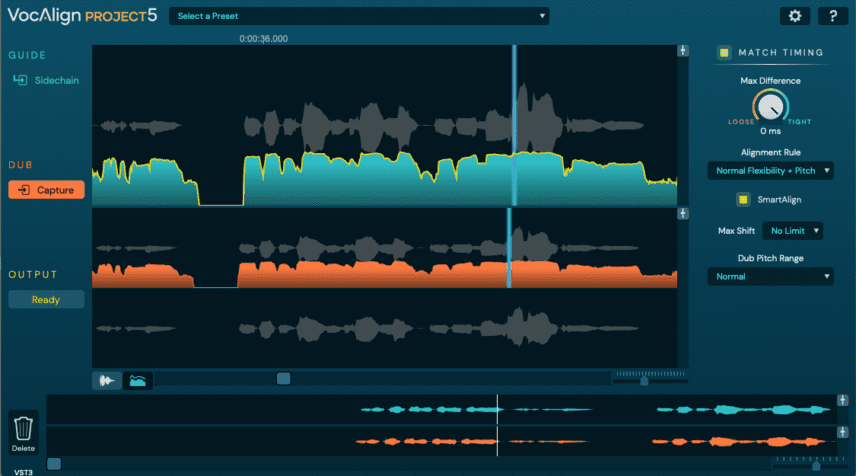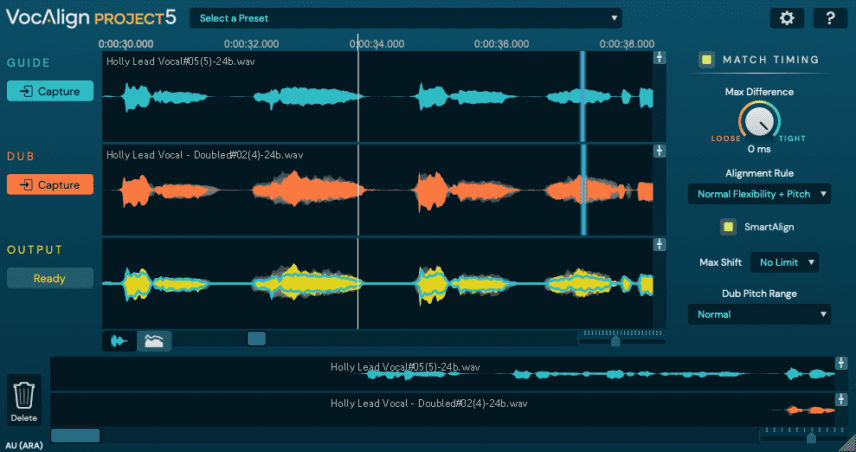Does Synchro Arts’ VocAlign audio alignment plugin really save you time? We put it to the test.
There are all kinds of plugins, from instruments to effects and all points in between. We tend to focus on the ones that make or mangle sound – after all, they’re the ones that help us compose music. There’s another type of plugin, though, one that is just as important as the kind that goes boom: the humble utility plugin. It may not make sound but it does something else that’s just as important. It makes your life easier. Today, we’re looking at one such plugin, the vocal alignment tool, VocAlign Project 5, from Synchro Arts.

Synchro Arts debuted VocAlign way back in 1995 and it continues to be an industry standard. As the name suggests, it aligns vocals in your DAW, saving you the tedium of manually lining up vocal takes. It also works with dialogue, sound effects, instruments, basically anything that needs to match a guide track. The plugin is currently up to version five. Let’s put it through its paces and see how it does in a real-world situation.
How It Works
According to the manual, VocAlign Project 5 works by “applying varying amounts of time-stretching and compression to one signal – the Dub – to align its energy peaks and troughs over time with those of a Guide signal.”
Basically, you drop the plugin on the track (or tracks) that you want to correct, you point it at the one to follow, it listens to the tracks, and then makes changes to the destination track. You’re then free to make adjustments to the timing before bouncing the changed audio. If that sounds simple, it’s because it is. It’s remarkably simple. And it works really, really well.
An Overview Of VocAlign Project 5
VocAlign has a single, easy-to-understand screen, dominated by three waveform lanes. The top shows the master track, the one that you want the affected track to follow. This is called the Guide. Next is the track to be altered, or the Dub. Finally, there’s the Output track, that is, the Dub with all changes applied. You can view track information as either a waveform or as what Synchro Arts calls Energy.
We preferred working with the waveform, as that was a more familiar format for us, but it’s nice that there are multiple viewing methods. The display also tells you how much change has been applied, time alignment, and other factors.

On the right are manual controls to adjust the changes that the plugin has made. First is Max Difference, which is a knob that controls how loosely or tightly the Dub follows the Guide. There’s Alignment Rule, which tells the algorithm how much time stretching and/or time compression you want it to use; Max Shift, for when you’re working with a lot of gaps in the material; and Dub Pitch Range, for fine-tuning the accuracy of the editing process (for example when working with audio that is particularly high- or low-pitched). Lastly, there’s SmartAlign, an intelligent function that helps match Guide and Dub tracks when their starting points are far apart. There are also a few presets to help you get started.
There are two different versions of VocAlign Project 5, the standard and the ARA version. The ARA version allows for instantaneous audio capture across multiple tracks while the standard one requires real-time capture on a per-track basis. Not all DAWs support ARA, which means that it functions a little differently in each host program. Let’s see how it works on a vocal project with a lead plus backgrounds and harmonies, first in standard form and then as an ARA plugin. Note that the vocals are completely dry with only VocAlign affecting them.
Test 1: Standard Version
For the first test, we try VocAlign in Ableton Live, which does not support ARA. We try it on the verse section of the track.
Here’s how it sounds before any processing:
First, we load an instance of VocAlign onto the main track, which is the Guide. Next, we load it onto every track that we want to correct (the Dubs), setting the sidechain of each plugin to the Guide track.

For the next step, we capture each Dub track independently, hitting the Capture button, pressing play on the DAW, and letting the plugin listen to each track one at a time. We can then adjust the timing of each track separately. By adjusting the Timing knob, we can select just how tight we want the results.
Here’s the session after VocAlign with loose timing dialed in:
Now the loose timing with a beat:
Here’s the same section with the timing set to tight:
And with a beat to compare:
Test 2: ARA Version
For the second test, we use VocAlign on a chorus section in Apple Logic Pro X, which supports ARA plugins.
Here’s the session before any processing:

With ARA involved, things are even simpler. We again load VocAlign onto every track but this time we link all the plugins together instead of sidechaining. To capture the Guide track we highlight, click Capture on the Guide track section of the plugin, and it happens instantaneously. For the Dub tracks, we can do them all at the same time. We highlight them, click Capture, and they’re done. Now, all we have to do is make any small adjustments to timing.
Here are the results with timing on loose:
Loose with a beat:
And now tightened:
And tight with a beat:
Easy Results Quickly
We were pleasantly surprised at how easy it was to get usable results quickly. Although we used it with vocals, it’s easy to see how this could apply to any number of situations, such as when multitracking instruments. It could also be useful in film and television post-production for syncing and replacing dialogue, as well as lining up sound effects. In fact, Synchro Arts has won an Emmy and an award from the Academy (the folks that give out the Oscars) for just this reason.
The Final Word
The only real competition to VocAlign Project 5 is the other VocAlign packages. Project 5 is the entry version and retails for £109, although it was on sale for £73 at the time this review was published. If you want to fine-tune things like vibrato and transients, or need control over warping, you’ll want to move up to a higher tier, either VocAlign Ultra or Revoice Pro 4.
If you work with vocals, record instruments, or are in post-production, Synchro Arts’ VocAlign Project 5 is a no-brainer. It does what is usually a very tedious job and it does it quickly and easily.
